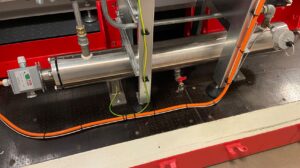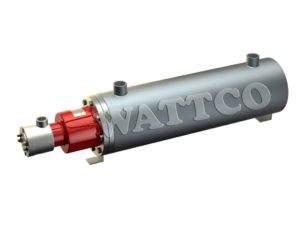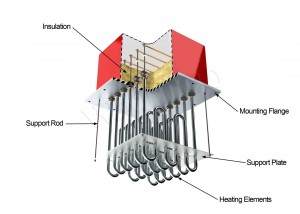Inline Heaters and Its Applications: An Introduction to Electric Duct Heaters
Last updated on October 13th, 2023 at 09:24 pm
 Circulation heaters, also known as inline heaters, are considered as the best for treating different types of chemical fluids including harmful liquids. Extreme precaution is necessary while heating these liquid chemicals because even a minor glitch can result in a drastic outcome. Hence, the flow rate is constant while providing transitional heating. Heat is generated using electricity as a power source which directly enters the targeted liquid.
Circulation heaters, also known as inline heaters, are considered as the best for treating different types of chemical fluids including harmful liquids. Extreme precaution is necessary while heating these liquid chemicals because even a minor glitch can result in a drastic outcome. Hence, the flow rate is constant while providing transitional heating. Heat is generated using electricity as a power source which directly enters the targeted liquid.
Characteristics
The prime feature of these heaters is transmission of heat in an efficient manner without dissipating. Installing and maintaining this device is easier; moreover, it is compatible with standard industrial piping policies.
Applications
A common application of inline heater is in the processing of steam, warming up of water and waste oil. Temperature is properly regulated and viscosity of the treated liquid is maintained. Other applications of it include;
- F
 or the processing of different chemicals requiring a closed and open circuitry system
or the processing of different chemicals requiring a closed and open circuitry system - In petrochemical industries for refining and production of oil
- For treatment of water during the mining process which keeps the overall temperature maintained
- Sanitizing and production in food manufacturing industries
- In military industries during the production of arms and ammunitions
Technical Specifications And Elements Used
There are many different sizes available for these heaters. They range from 1 to 14 inches with each having a stimulated carbon steel pipe body. It takes around 650-kilowatt power is to function this device. Elements used in the manufacturing of sheath material include steel, stainless steel, titanium, Incoloy, Inconel and copper.
Benefits
Provided below are some essential benefits of using inline industrial heaters
- Easy to install, clean, maintain and replace in case of malfunction
- Maximum heat output with small sized heater makes it one of the best products
- Digital controlling mechanism for automatic temperature maintenance and longer device durability
- Anti-explosive and shockproof body with dielectric strength
Manufacturing Details
The heating element of an inline heater is mounted in a circular tube. Thermocouple sensors integrate with these heaters for adjusting and controlling the temperature. There are many different sizes available with variation in design and outlook along with several mounting options.
On request, additional components are available like moisture resistant and anti-explosive casing. You can also install drain valves to the heaters which will help in the overall system maintenance and performance; moreover, cleaning of surplus fluid like water or calcium residue is also easy.
An Introduction To Electric Duct Heaters And Its Applications
Electric/Inline Duct heaters are most common in buildings and places having a central heating system to stabilize the surrounding temperature. They help with the piping and tubular vessels that need to circulate water and heat in a prescribed limit. Pipes and liquid flowing tubes prevent the device from freezing or overheating. 
Electric duct heaters are also common in industries which deal with the manufacturing and maintenance of devices such as air conditions, heating and ventilation system in large buildings and plazas.
For more details, visit the following links https://www.wattco.com/product_category/inline-heaters/ https://www.wattco.com/hvac-industry/
